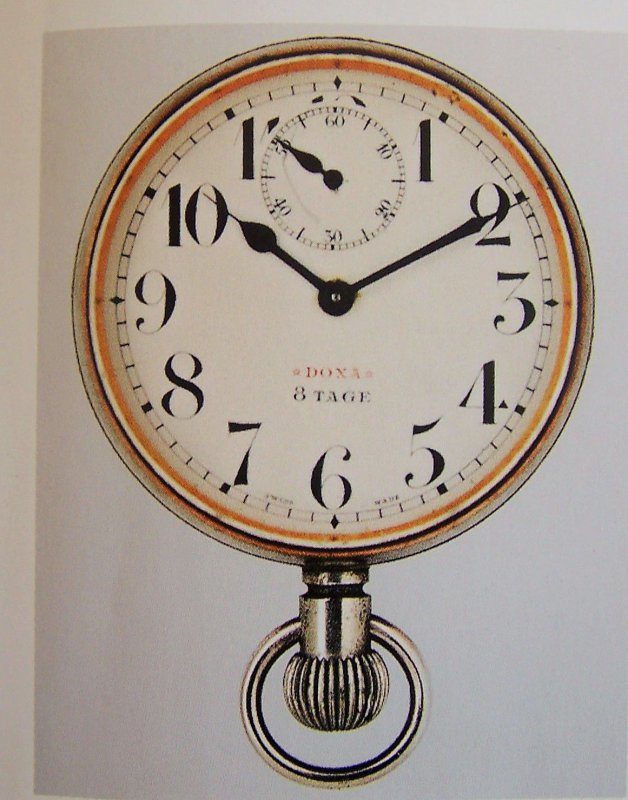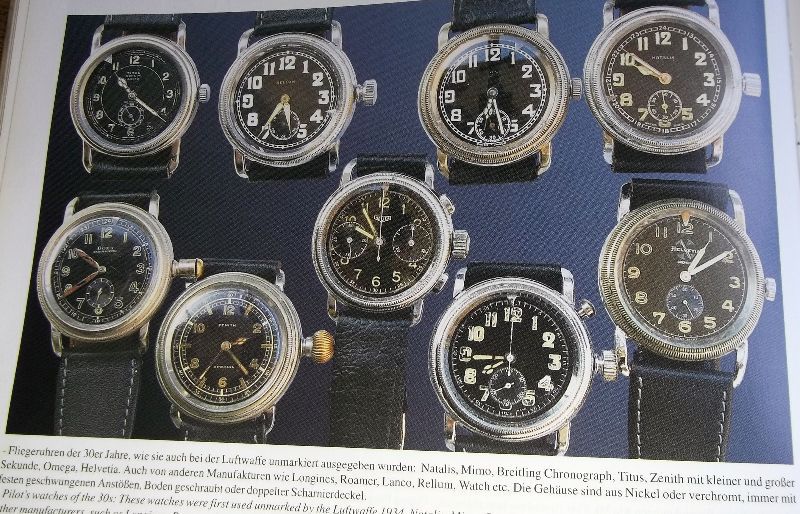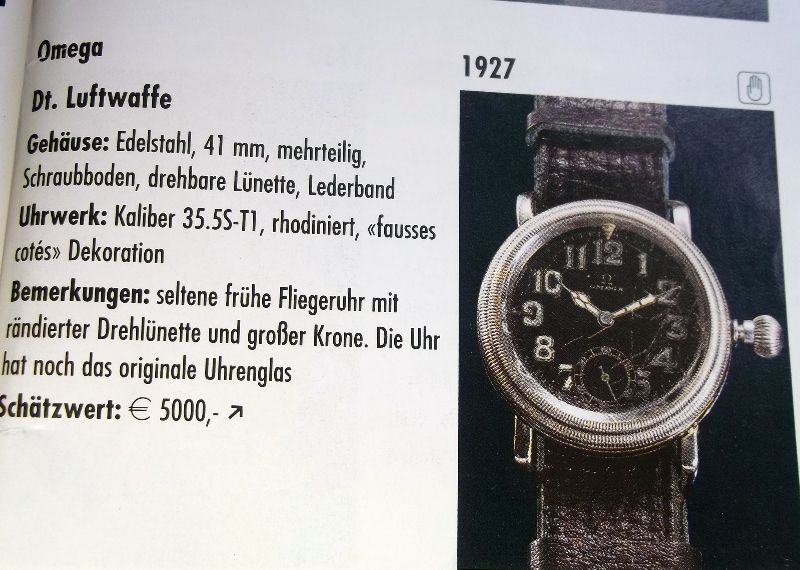
History of military wristwatches from 1880
Share
History of military wristwatches:
The history of the military wristwatch began in the last third of the 19th century. During the American Civil War (1861–1865), pocket watches were used exclusively, and even then only by officers who could afford such technical achievements.
At this time, there were already the first "real" wristwatches for women from various manufacturers, but these were neither accurate nor robust, were not suitable for military purposes, and were perceived at that time merely as a fashion gag and trend.
The disadvantages of a pocket watch in the field or in combat are obvious: it took 10 seconds or more to pull it out of the pocket of the tight, thick uniform jacket. This time—extremely long in combat—could, in the worst case, result in a bullet hit and wound, because one would be distracted from the action and preoccupied with the pocket watch during the crucial seconds.
Soldiers of various armies therefore increasingly began to insert pocket watches into self-made leather straps with sewn-on hollow flaps in order to be able to use them easily on the wrist at any time.
It is considered certain that the well-known Swiss manufacturer Girard Perregaux was the first manufacturer to win a tender among Swiss watch manufacturers around 1880 and supplied the German Imperial Navy with pocket watches combined with such bracelets, which were initially used in naval attacks and naval battles with several ships to synchronize the guns and salvos.
In the Second South African Boer War (1899-1902), these "leather cuff wristwatches/pocket watches" made a decisive contribution to the victory of the technically superior British, along with other military innovations such as smokeless gunpowder, the multi-shot magazine for assault rifles, and the first prototypes of machine guns.
The first known "test report" of these wristwatch models dates from this period: on June 7, 1900, a captain of the Northern Staff Regiment in the Boer War reported to his superiors: "I wore this "wristwatch" directly on my wrist for 3.5 months during my service at the front in South Africa. It kept excellent time and never let me down."
Almost all well-known pocket watches from major manufacturers were used: Omega, Rolex, IWC, Moser & Cie, Lünser, Huber Munich, Lange&Söhne, Eterna, Longines, Junghans, Doxa, Minerva, Breguet, Vacheron&Constantin, Zenith, Mimo, Rellum, Breitling, Titus, Roamer, etc., and the German armed forces used models from the Berlin manufacturer FW Kreis Berlin in particular.
It is documented that the early Imperial Air Force, even during World War I (1914–1918), equipped its legendary fighter squadrons with these models as standard equipment. The now industrially manufactured hollow leather cuffs were stamped on the back with the initials of the pilots or officers who owned them and the identification number of the respective fighter squadron. Several photographs of Kaiser Wilhelm II from the period before 1918 also survive, showing him proudly wearing this earliest of all military wristwatch models with his uniform.
Another decisive step was the invention in 1906 of an interchangeable and length-adjustable leather strap (for pilots to wear on their thighs over their flight suit) with soldered bars or wire loops on pocket watches, which allowed for the threading of thin leather loops. This was the first so-called "under-the-loop strap," some of which are still used today by the military or by divers.
A major problem was the crystal glasses used at the time, which were extremely fragile and prone to impacts and shattering, especially in direct combat. This was initially remedied around 1910 by simple cover plates with large holes (later metal mesh, called "shrapnel protection," to make the dial easier to see).
There is a misconception that these grilles on these so-called "trench watches" were designed to protect against grenade splinters. This is, of course, nonsense! Neither a wristwatch nor a pocket watch, nor any grille in front of them, could withstand a grenade splinter. The protective grilles served as protection against mechanical forces and impacts during front-line work, such as digging, carrying heavy beams during entrenchment, or operating, loading, and unloading artillery pieces with heavy shells.
These early guards and grilles were initially self-made or were made by completely unrelated craftsmen such as blacksmiths or ironmongers and sold individually to the existing clock and, if necessary, also adjusted in size: The legendary "Trench Clock" was born.
The trench watch quickly became a status symbol of war heroes and front-line soldiers due to its unique and eye-catching design and was worn and presented with pride long after the war.
This upgrading to a status symbol similar to an order, from the simple soldier to the highest officer, also explains why these trench clocks were produced long after the First World War, were elaborately and artistically designed and the lids were mostly made of silver, even though this metal was far too soft for use on the front lines.
The technical term for these trench watches was internationally established as "Half Hunter" (because only part of the dial was visible) or simply "Trench Watch".
Despite their military suitability and proven performance in front-line operations, these early military watches were not yet "real" military wristwatches, but were based entirely on ladies' pocket watches or their movements. These early models did not yet make the leap to the civilian, "primary market" and remained reserved for the military for almost two decades.
The main supplier of these pilot's pocket watches before and until the end of the First World War was the Berlin manufacturer FW Kreis Berlin for the imperial troops, especially the newly founded air force. This standard pilot's watch of the early Reichsluftwaffe was always signed "Property of the Air Force" on the dial and featured the air force's logo on the caseback: the propeller with two lateral blades.

The second major supplier of this watch type was the George Ducommun manufactory. The most striking feature of both models was the rotated dial, with the crown at the bottom and the indirect second hand at the top of the actual "12."
With the outbreak of the First World War, the importance and demand for robust and precise wristwatches changed rapidly! While the Imperial Army was still equipped with simple pocket watches in leather cuffs, which were worn on long straps over the flight suit or hung in the leather cuffs clearly visible in the cockpit, the Allied armies – encouraged by the positive experiences from the Anglo-Dutch Boer War in South Africa – were equipped with a wide range of small military pocket watches with interchangeable, fixed straps on fixed, soldered bars.
These small pocket watches were already upgraded by the manufacturer for military use, some of them already had radium-filled, self-luminous hands and the "shrapnel protection grid" factory-fitted, often even with a convenient folding hinge or for removal
This type of first genuine military wristwatch was given "warlike" fantasy names by the manufacturers such as "Mars" (from the Greek god of war Mars), Bellum, in further variations also Rellum, "Hindenburg" or in allusion to the newly developed submarine weapon "U 29", "U21" etc. In addition, other features for military use, such as a small compass embedded in the case, were developed and installed.
In Germany, these models were offered for civilian use around 1920 at a price of 17 Reichsmarks (simple versions) to 37 Reichsmarks (for models with a second hand).
They were professionally distributed and advertised on the civilian market, for example, by the companies "Siemann Army and Marine Watches" in Berlin, "Oswald Staerker" in Pforzheim, the "Germany Watch Manufactory Leo Frank", but also by the small manufactories from Munich, Pforzheim and Glashütte, which later became very important.

In 1914, global demand for military wristwatches reached its first peak. Wristwatches were no longer a novelty or a "gimmick," but a vital piece of war equipment. From around 1912, manufacturers could barely keep up with the production of genuine military watches.
The company that profited the most from this was Wilsdorf&Davis Ltd., founded in London in 1915. Later, under the now best-known name for luxury watches, Rolex, it rose to become an internationally renowned luxury watch manufacturer. In the early years, W&D initially only built purchased movements (e.g., from the later acquired company Rehberg) in also purchased cases, e.g., from Dennisson.

Hans Wilsdorf, the founder and director of W&D, later the Rolex luxury watch manufacturer, was the first strong advocate of wristwatches since the turn of the century. While others still scoffed at this new trend, Wilsdorf had already been experimenting with their precision, reliability, and accuracy for years. It is said that the German Hans Wilsdorf contributed more to the development of the wristwatch we know today than anyone else in his field.
Wilsdorf subjected his wristwatch movements to the most stringent inspections and stress tests. He was also the one who came up with the idea of regularly sending his new developments to the Neuchâtel Observatory (Switzerland) for further testing. He can therefore be considered the inventor of the chronometer, or rather, the chronometer test, which the world's best and highest-quality watch manufacturers and models still voluntarily undergo today.
W&D/Rolex received the first wristwatch chronometer awards from the School of Watchmaking in Biel (1910), and the Class "A" Certificate of Precision from the Kew Observatory in England (1914). To date, W&D/Rolex has received more certificates from the Contrôle Officiel Suisse des Chronomètres (COSC) than all other watch manufacturers in the world combined.
Even during the First World War, other manufacturers such as Franz Baumgartner, Borgel or Dennison recognized or suspected the impending triumph of the new wristwatch and contributed to the development of ever better cases that were more resistant to splinters, shocks, dust or water.
Further developments in the post-war period were the invention of solid, fixed metal bars to better protect the solid bezel around the case, glass and movement, as well as the indirect second with sub-dial as a precursor to the later and still common "central second"
However, the development and presentation of the first truly waterproof wristwatch was reserved for W&D / Rolex in 1926 with its wristwatch, which is still successful today and is called "Oyster".
The next milestone in the military wristwatch is the early Swiss military watches with arrow index from 1928 to 1930, of which the inventor and first supplier is unknown.
As a precursor to the chronograph with second hand and zero setting, which was known from 1932 onwards – especially for Luftwaffe pilots to calculate flight time, fuel consumption or supply, etc. – an unknown inventor and watchmaker invented and developed a rotating bezel with an applied arrow index around 1926.
This original solution for pilots and flight personnel is not comparable to the diverse possibilities of a column wheel chronograph, but by setting the index arrow with the rotating bezel either to the time of departure or to the time until the maximum fuel limit, one has more or less precise and easily accessible information at any time, without having to pick up and use additional instruments or make separate notes.
Other typical features of these models were extremely wide, curved lugs and the fact that they were almost never signed with military insignia in Germany, because an air force was not allowed in Germany in the 1920s according to the Treaty of Versailles and for this reason was not allowed to act as such and issue signed equipment.
Virtually all renowned watch manufacturers of the era developed and produced models of this "early pilot's chronograph":
IWC, Omega, Helvetia, Natalis, Laco, Rocail, Longines, Rellum, Titus, Breitling, Zenith, Roamer etc


In fact, within two years, absolutely all known manufacturers in Germany and Switzerland produced these early pilot's watches with rotating knurled bezel and arrow indexing for exclusively military use. Perhaps there was a tender for this from some army in Europe.
Responsible for the development and procurement of this equipment was the legendary flying ace of the young Reichsluftwaffe (which existed and operated years before its official founding, contrary to the Treaty of Versailles), Ernst Udet, who was entrusted with this important task by his old flying comrade from the Jasta (fighter squadrons of the Imperial Air Force) during the First World War and later Reich Minister of Aviation, Herman Göring.
It is unknown who invented this type of watch or which manufacturer first produced it. In the mid-1930s, this early pilot's watch of the Reich Air Force was gradually replaced by genuine chronographs, which had since been invented, and the legendary B-watches with diameters up to 60mm, which were worn over pilot's uniforms.
Starting in 1935, infantry and ground personnel received so-called "Wehrmacht Service Watches," which were produced and delivered by all manufacturers. These quasi-standard military watches were usually 35 cm in diameter, featured an indirect second hand, radium-filled hands and indices, and often also anti-magnetic soft iron protection for the movement. These Wehrmacht service watches were often signed with an abbreviation for the associated branch of service or Wehrmacht division, e.g., the letters "D" and "H" for "Deutsches Heer," "RLM" for Reichsluftfahrtministerium (Reich Air Ministry), "DAK" for "Deutsches Afrika Korps" (German Africa Corps), or even just a "D" for Deutschland (Germany).
Copyright 2010: Reiner Haas




